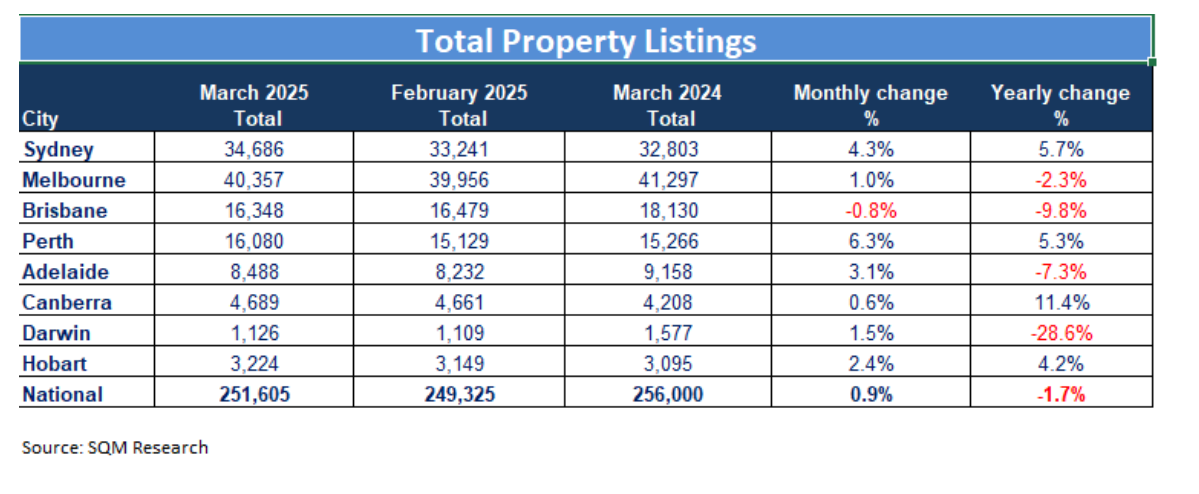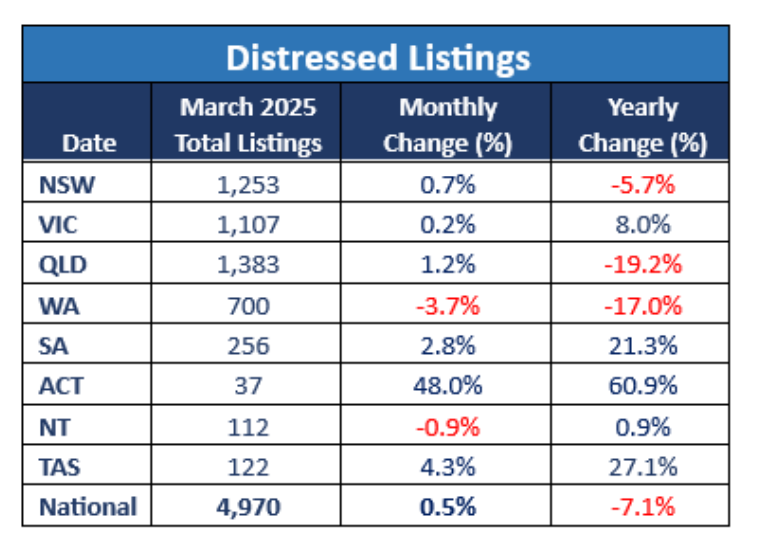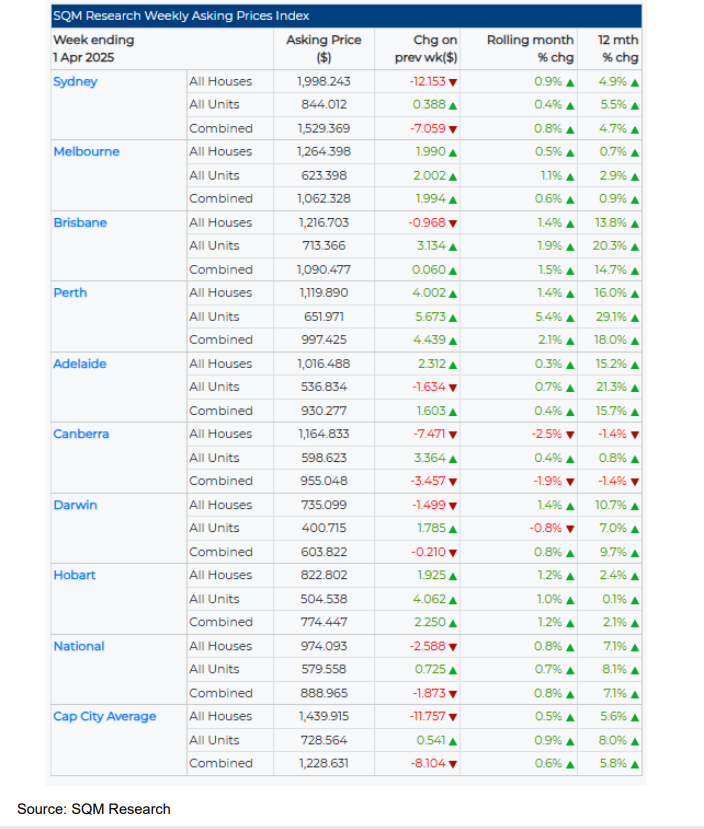

Amidst improved market sentiment following the Reserve Bank’s February rate cut, recent data from SQM Research has shown a slight increase in overall residential property listings nationwide.
As of March, listings rose by 0.9% from the previous month to 251,605, although this represents a 1.7% decrease year-on-year.
Notably, the largest monthly increase occurred in Perth, with listings up by 6.3%, contrasting with a 0.8% decrease in Brisbane.
Despite the fluctuations, the market showed signs of ongoing stability, as indicated by the modest changes in major cities like Sydney and Melbourne, which saw increases of 4.3% and 1%, respectively.

Older property listings, those on the market for over 180 days, have risen by 3.6% nationally, reaching 74,877 properties.
This growth is particularly notable in regions like Canberra and Perth, suggesting some properties are taking longer to sell, possibly due to market saturation or pricing mismatches.
Despite a small increase, distressed property listings remain relatively low, with a 0.5% rise this month to 4,970 properties, SQM Research reported.
This suggests that while there are challenges, significant financial distress among homeowners is not widespread.
Regions like NSW and VIC saw minor monthly increases, but the overall trend remains stable.

The asking prices for residential properties have shown a general upward trend, reflecting vendor confidence in various regions across the country.
Nationally, house prices have increased by 0.8%, with unit prices following closely at a rise of 0.7%, culminating in a combined increase of 0.8%, SQM Research data showed.
In major cities, the variations in asking prices have been quite distinctive:
These figures highlighted the robust nature of the housing market, where despite some fluctuations, overall growth remains positive.

Louis Christopher (pictured), managing director of SQM Research, which recently announced its heightened scrutiny of the private credit sector, said that overall, the property market appears resilient with continued interest and activity, although certain areas like Perth show signs of slowing.
“Going forward, with the federal election now called, it’s quite likely we will see reduced activity levels in the housing market until after election day,” Christopher said. “The RBA not cutting interest rates may also cool the heels of would-be home buyers.”
